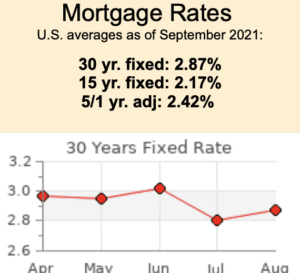How Do You Get a Construction Loan?
If you want to build a custom home instead of buying an existing property, you might need a construction loan. A construction loan is considered a short-term loan that covers just the cost of building a custom home.
After your home is built, you have to apply for a mortgage, and that’s used to pay for your completed home.
Along with being shorter-term than a mortgage, a construction loan usually has a higher interest rate.
The loans usually last for a year, and during that time, the property has to be built, and you have to receive your certificate of occupancy.
What Do Construction Loans Cover?
A construction loan can be used to cover a variety of costs, including your contractor’s labor, building materials, permits and the cost of the land. You may be able to use it for things like landscaping and appliances as well.
When you go to your lender to get a construction loan, you should go over with them specifically what it will cover and what will be included in the loan-to-value calculation.
In many cases, construction loans will have what’s called a contingency reserve. The reserve can be used to cover costs that pop up unexpectedly during construction. For example, you might decide you want higher-end cabinets than you initially planned for, in which case you would use your contingency reserve.

How Do These Loans Work?
Most construction loans have variable interest rates, so the rates go up and down according to the prime rate. The loan rates are almost always going to be higher than a traditional mortgage. When you get a conventional mortgage, the home itself is collateral. Then, if you were to default, the lender can take your home. Lenders don’t have that option with a construction loan so they’re higher-risk, meaning you pay a higher interest rate.
A construction loan depends on your project being completed, so you’re required to provide the lender with detailed plans, your budget, and your anticipated construction timeline.
Then, after you’re approved for financing, you are put on what’s called a draw or draft schedule, following the stages of construction. During this time, you’re expected to make only interest payments. The lender pays money out in phases as the progress on your home moves forward.
Draws will occur with major milestones being completed. For example, you might get a draw when your foundation is laid.
During the construction process, your lender will have an inspector or an appraiser check on building progress.
Once your home is built, you may be able to convert your construction loan to a traditional mortgage. This type of loan is known as construction-to-permanent.
If you get a loan that’s only for construction, then as the borrower, you might have to obtain a separate mortgage that is then used to pay off your construction loan.
Different Types of Construction Loans
There are various types of construction loans, including:
Construction-to-permanent loan
Construction-to-permanent loans give you the funding to build your home and also for your mortgage. You borrow money to pay to build your home. Then, once it’s finished and you move in, your loan is converted to a permanent mortgage.
There are benefits to this option, including the fact that you only have to pay closing costs once.
After your shift from construction to permanent happens, the loan will usually have terms of 15 to 30 years, and you make payments covering your interest and principal.
Construction-only
With a construction-only loan, you get the funding just to complete building your home, but as the borrower, you have to either pay the loan in full at maturity which is usually within a year or get a mortgage for permanent financing.
The funds from a construction-only loan are dispersed based on how much of the project is completed.
A construction-only loan may end up being more expensive because you’re going through the process of two loan transactions, meaning two sets of fees.
Owner-builder construction loan
Finally, there’s also something called an owner-builder loan. These can be construction-to-permanent or construction-only loans. The borrower is also the builder, but to get this kind of loan, you usually have to be a licensed builder.
Looking for More Information?
Use the form below and we'll get back with you as soon as we can.










